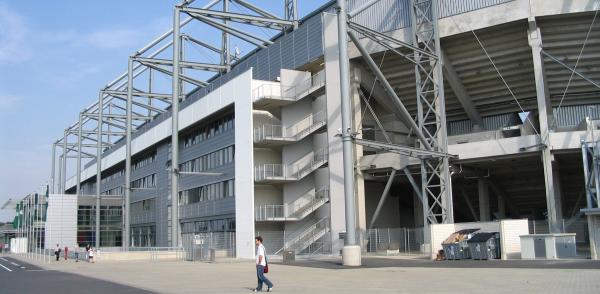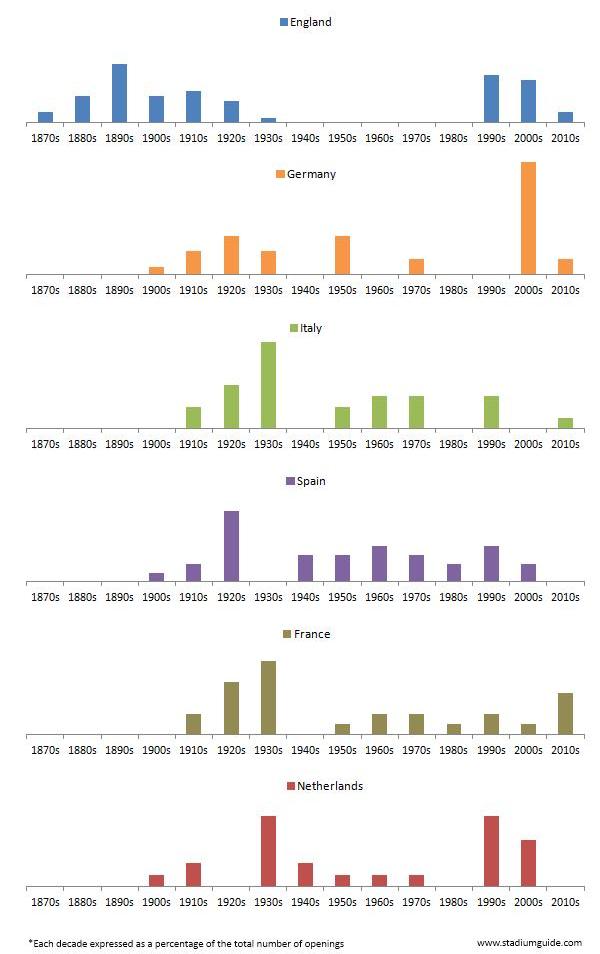
Instead of being nicely spread out over the years, stadium openings tend to come and go with waves. We recently dedicated an article to the particularly prolific year of 1923, but the early 1920s have not been the only period of frantic stadium construction in the last 150 years.
These periods did not arrive at exactly the same moment in every country though. We all know that England already had proper football temples when matches in continental Europe were still played at bare pitches, and the last two decades have seen a lot of new stadiums rising up in some countries, but not so much in others.
To get more insight into the path each country has taken in terms of stadium development, we looked into our database for the opening dates of all stadiums, and then made a nice chart of them (further below).
Some things that attract the attention are obviously the early start of England, but then also the five decades of drought following the 1930s. We see that the 1920s and 1930s were very important years for stadium development on the continent, and that the Germans and Spanish were somewhat ahead of the Italians and Dutch.
What becomes very clear is how important the Italian fascist regime has been for stadium development in Italy, and the negative impact of the Second World War is also unmistakeable. The Spanish Civil War, of course, took place in the 1930s.
We had expected to see a significant bump of stadium construction in the post-War years as well, but this instead turned out to be spread out over various decades, before the crisis years of the late 1970s and 1980s set in. The 1982 World Cup made that at least in Spain a few new stadiums opened in those years.
We are all aware of the new generation of stadiums that got built in the 1990s and 2000s, but while the 1990s were particularly important for England and Holland, German stadium development took almost exclusively place in the 2000s. For the French, on the other hand, the present decade seems to turn into their golden decade of stadium development.
See below for the chart. The columns are not the actual number of openings, but the relative contribution of each decade to stadium development, so that all countries use the same scale and can be easily compared.
